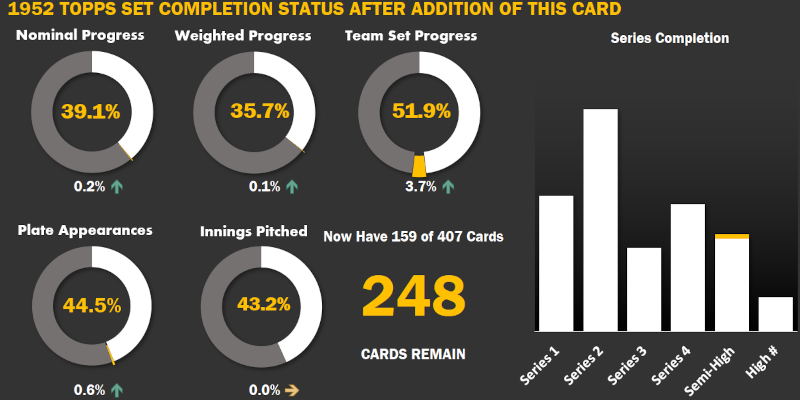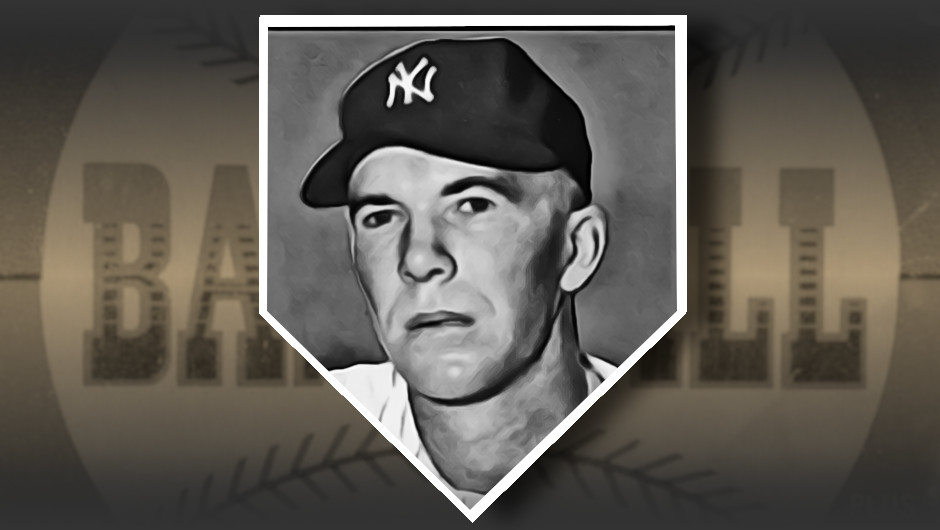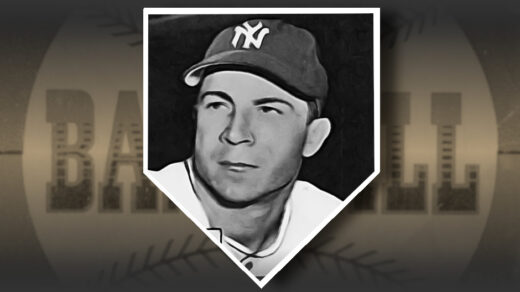Last year I wrote that Johnny Wyrostek might be the most successful politician appearing in the 1952 Topps set. It turns out he has some serious competition from Mexico.
Bobby Avila was extremely popular in his home country. While playing for the Cleveland Indians, he acquired ownership of the Mexico City Reds, a professional baseball team in the Veracruz Winter League. Upon his retirement from MLB in 1960 he became president of the league, which was promptly renamed in his honor. Imagine the goodwill that would be needed to prompt Major League Baseball to become “Rob Manfred League Baseball.”
Two decades later he was elected mayor of Veracruz. He promptly moved up further, going to Mexico City to become a multi-term representative in the Congress of the Union.
Avila-Mania
Bobby Avila appears in the set’s semi-high number series, fresh off his first All-Star Game appearance and sporting a lifetime batting average above .300 on the back of the card. He played for a decade as the second baseman of the Cleveland Indians. The first Mexican-born player in Major League Baseball, he came to the team with five seasons of pro ball already under his belt, augmented by some time as a professional soccer player. The latter apparently helped him perfect the art of kicking balls away from infielders attempting to tag the him out during slides.
Avila’s arrival in Cleveland was huge, not only because he kept a recent (1948) World Series champ competitive into their 1954 run for the title, but because he represented the combination of Mexican and American baseball. The most popular leagues of both nations had competed for top talent over the previous decade with the Mexican League attracting several stars. Avila was the first player to transition in the other direction, garnering three All-Star selections and winning the 1954 AL batting crown.
His popularity reached a peak during 1954 as he not only battled Ted Williams for the batting title, but chased a younger Williams’ ghost by batting .400 for most of the early season. Mexico fell in love with their homegrown star, pouring out a level of fandom that would not be seen again until Fernando Valenzuela and Fernando-mania arrived a generation and a half later. Avila’s average swooned late in the year after a hand injury hampered his swing, though he still hit well enough to lead the league.
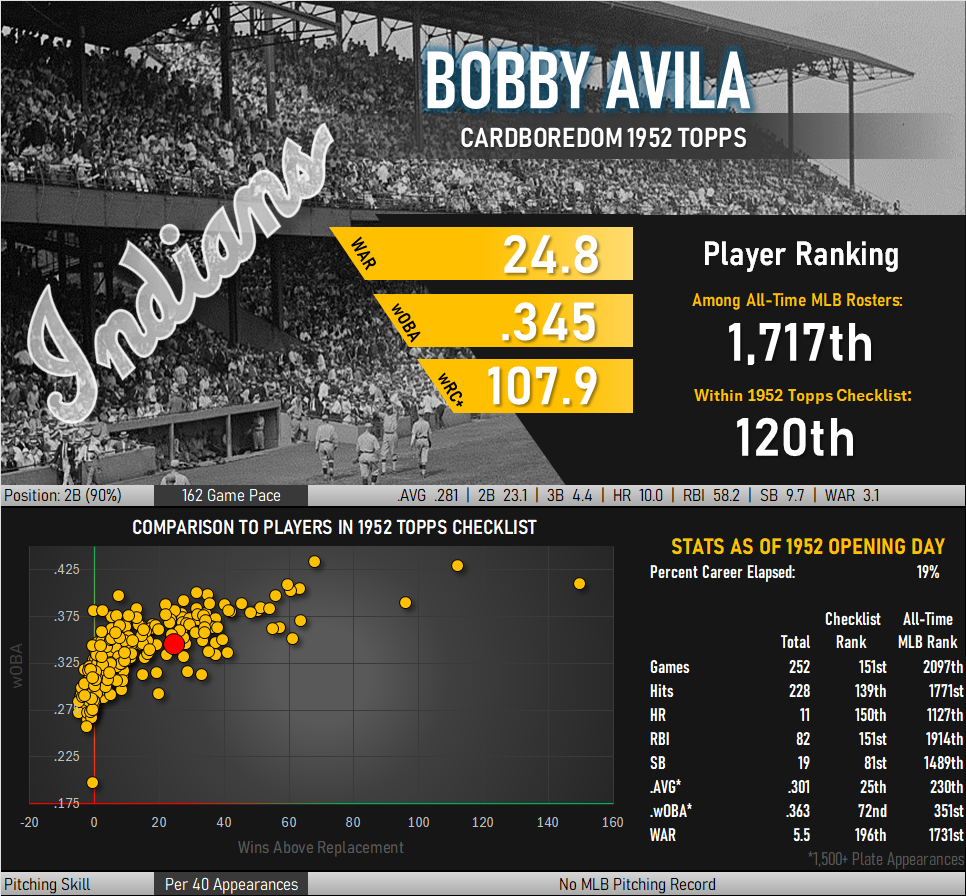
An Interesting Signature in ’52 Topps
Each card in the 1952 edition of Topps baseball cards includes a rectangular nameplate at the bottom of players’ photographs. This section of the card includes a name in printed text along with a facsimile signature, often lifted directly from the legal documents in which athletes granted Topps permission to issue the very card in question. Topps and other card manufacturers seemed a bit confused by how to address Avila in theirs sets. Bowman introduced him as “Roberto” in his 1951 rookie card. Spanish language issues appearing later in his career referred to him as “Beto.” Most issues referred to him as “Bobby,” a route Topps took for its entire run of Avila cards through 1960.
Avila himself was a bit conflicted about how to be addressed. In Mexico he signed all his autographs as Beto Avila. His professional baseball equipment was inscribed to the same name, though his SABR bio notes that he kept sets of bats under both Beto and Bobby during his tenure with Cleveland.
For this reason it is his facsimile signature in the ’52 set catches my eye. Avila presumably signed his Topps licensing contract with Topps the way his signature appears on the card, as “Bob” Avila. The extra flourishes on the leading “B” in Bob might be a matter of pride in signing a professional contract, but I find it more plausible that he started to sign as Beto before adjusting to his more northern nickname.
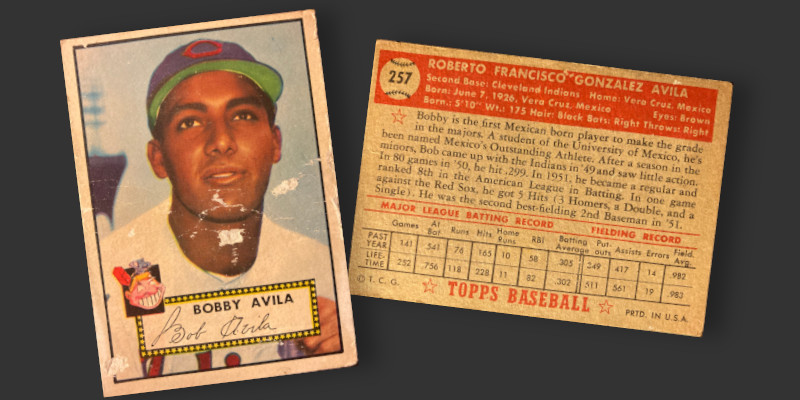
I added Avila to my in-progress set as part of a multi-card purchase from longtime hobby veteran Gar Miller. This already low-grade filler card falls even further into poor condition due to several areas of paper loss across the photograph. I’m toying around with the idea of coloring in these sections, though I am not sure the already weak cardboard could survive such a process.
